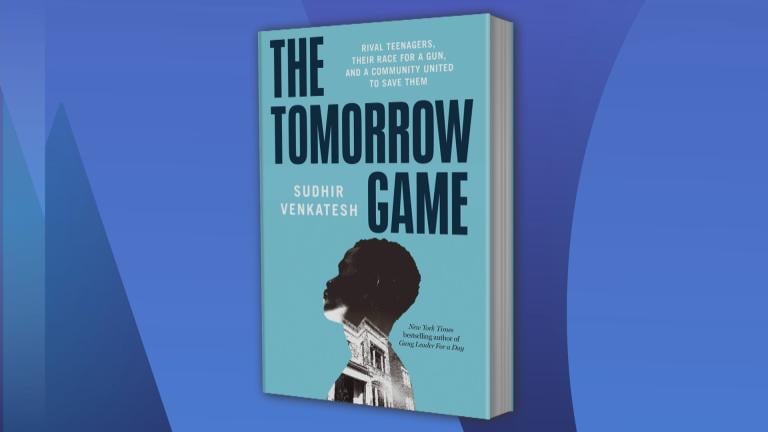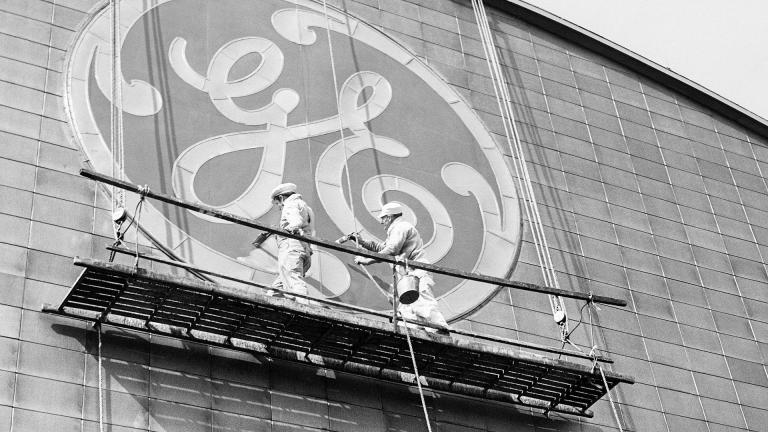Chicago’s connections to the meat processing industry are well known. The city was once known as the “hog butcher to the world.”
But the beef industry didn’t just spur Chicago’s development. In a new book, historian Joshua Specht says the beef industry helped modern America itself.
The book is called “Red Meat Republic: A Hoof-to-Table History of How Beef Changed America.”
“I had been curious about food production since I was in college and thinking about our food choices,” Specht said about why he wanted to write the book. “I realized that the early history of beef production hadn’t really been well covered. We know the 20th century story … McDonald’s, etc. … But this late 19th century story of the Chicago stockyards and the development of the American West hadn’t really been appreciated.
Below, read more of our edited Q&A with Specht. Read an excerpt from the book here.
Explain how the Indian Wars were tied to the expansion of beef production? In some ways this is a business that is built on genocide, right?
I think that’s a very important point. Everybody talks about how important railroads are to this story and the West and they don’t ask well where did that land come from? There’s also the land that the rails go over and the ecosystems that are radically changed. That was only achieved through the dispossession of American Indian land. It wasn’t just that the military cleared the land and then you had ranching move in there but also the earliest cattle ranching was kind of a tool that helped make that happen.
So in a sense white Americans, from the perspective of the day, felt that this land was too good to be left to the American Indian population.
Exactly right and I think the argument basically went like this: They are not putting this land to its highest use, which would be ranching, so we have a legitimate claim because we are sort of helping that land realize its potential.
Are there any particular incidents that are kind of emblematic of the relationship between ranchers and Native American populations?
I think the best example might be the Red River War of 1874-75. Basically it starts as a series of disputes between hunters of buffalo and small ranchers trying to encroach on what had been traditional hunting grounds for the Kiawah, Comanche and a few other groups. Those groups get together and try and expel (the ranchers) to protect their hunting rights. The U.S. military initially doesn’t want conflict but they decide they need a way to settle this once and for all. So they decide they are going to crush the Kiawah, Comanche and others and over a couple of years they essentially capture them and they very deliberately kill all their horses and ponies which are the source of their power and mobility and confine some of them to reservations. The “troublesome leaders” are sent to prison in Florida and shortly thereafter, near one of the sites of a decisive battle of the Red River War, Charles Goodnight, one of the most famous ranchers of all time, founds his JA Ranch.
Talk a little bit about the myth of the open range and the frontier spirit that theoretically helped forge the American character.
This is why beef is so important culturally in America. There is a story of people going to the American West and in a way self-actualizing, transforming the American West into the United States and transforming themselves into Americans. And because so much of that has involved cattle and cattle ranching it means beef is also conceptually at the center of that story. What it means to be this self-sufficient but also tough American is important in terms of American identity. It’s also, as I suggest in the book, quite far from the reality of ranching in the West which actually in many ways looks like big business.
How was it that Chicago became the city that this industry was focused on?
I think the first rule with any great city like Chicago is that it takes a little bit of luck, a lot of hard work and a good location. Chicago has a very special location historically because it’s on the lake. But it’s also at a good transit point between the Mississippi watershed and the Great Lakes system. So from the earliest days it’s been a trading post. That leads to the expansion of the railroads there. And then with the American Civil War the whole economic system gets oriented around the distribution of goods from the West to Chicago and then from Chicago around the United States.
There’s also an element of historical accident: Cincinnati was a pork packing center – it was known as “Porkopolis” – before Chicago. But it was on the Mississippi and during the Civil War the Mississippi was the site of a lot of fighting so (meat producers) started to move their industry to a safer location like Chicago.
Talk a little bit about the consumer demand for beef in this period. How did beef become so central to American consumers?
The interesting thing about beef is that they weren’t having it all the time but it was a special occasion sort of food. You might have it on a holiday. So once beef becomes cheap and abundant in the late 19th century it isn’t that there is a new preference for beef, it’s that a sometimes food becomes an all-the-time food. And for people, as their incomes go up they want more beef. It becomes a sort of metric for showing your progress and success in America.
What do you want people to take away from your book?
I think if you look at the history of our food system and beef in particular its shape was never inevitable. It didn’t have to look this way because of railroads or because of refrigeration. This was in fact a story about politics and social conflict and people struggling to control different parts of the system.
How we produce our food is a decision about the kind of society we want to live in and it’s not a necessary result of mass society or big business.
Below, an excerpt from the book.
Jonathan Ogden Armour could not abide socialist agitators. It was 1906, and Upton Sinclair had just published The Jungle, his explosive novel about the American meatpacking industry. Based on two years of research and six weeks of undercover reporting, Sinclair’s book was the arresting tale of an immigrant family’s toil in Chicago’s slaughterhouses.1 Unfortunately for Armour, The Jungle was not his only concern. A year before, muck- raking journalist Charles Edward Russell’s The Greatest Trust in the World attacked a packing industry that comes to the American dining table “three times a day ... and extorts its tribute.”2 In response to these attacks, Armour, head of the enormous meatpacking firm Armour & Company, took to the Saturday Evening Post to defend himself and his industry. Where critics saw filth, corruption, and exploitation, Armour saw cleanliness, fairness, and efficiency. If not for “the professional agitators of the country,” the nation would be free to enjoy an abundance of delicious and affordable meat.3
Armour and his critics could agree on this much: they lived in a world unimaginable fifty years before. In 1860, most cattle lived, died, and were consumed within a few hundred miles’ radius. By 1906, an animal could be born in Texas, slaughtered in Chicago, and eaten in New York. Americans rich and poor could expect beef for dinner. The key aspects of modern beef production— highly centralized, meatpacker dominated, and low cost— were all pioneered during the period.
America made modern beef at the same time that beef made modern America. What emerged in the late nineteenth century was truly a red meat republic; beef production and distribution were tightly linked to the development of the federal state and the expansion of American power west of the Mississippi. During the 1870s, small-scale cattle ranchers supported as well as instigated and justified wars against the Plains Indians. In Wyoming and Montana, wealthy ranchers dominated state and territorial governments, shaping their early histories.
Meanwhile, the emergence of the regulatory state was closely connected to beef production. Key federal bureaucracies, such as the Department of Agriculture, the Bureau of Animal Industry, and the Food and Drug Administration, were in large part outgrowths of state attempts to regulate beef production and distribution. In Chicago, the “Big Four” meatpacking houses were some of the first large, integrated corporations, pioneering the assembly line, managing global distribution, maintaining complex supply chains, and growing into the largest private employers of their day.
For Jonathan Ogden Armour, cheap beef and a thriving centralized meatpacking industry were the consequence of emerging technologies such as the railroad and refrigeration, coupled with the business acumen of a set of honest and hardworking men like his father, Philip Danforth Armour. According to critics, however, a capitalist cabal was exploiting technological change and government corruption to bankrupt traditional butchers, sell diseased meat, and impoverish the worker. Ultimately, both views were in some sense correct. The national market for fresh beef was the culmination of a technological revolution, but it was also the result of collusion and predatory pricing. The modern slaughterhouse was a triumph of human ingenuity as well as a site of brutal labor exploitation. Industrial beef production, with all its troubling costs and undeniable benefits, reflected seemingly contradictory realities. This book explains the origins and ongoing resilience of a beef production system that was at once revolutionary and exploitative.
Excerpted from Red Meat Republic: A Hoof-to-Table History of How Beef Changed America, by Joshua Specht. Copyright © 2019 by Princeton University Press. Reprinted by permission.
Related stories:
Beloved Rogers Park Restaurant Demolished
The Hatchery Chicago Cooking Up Food and Jobs on the West Side
FoodQ Pilot Program Delivers Healthy Meals to Chicago Food Deserts
White People’s Eating Habits Produce Most Greenhouse Gases, Study Finds








